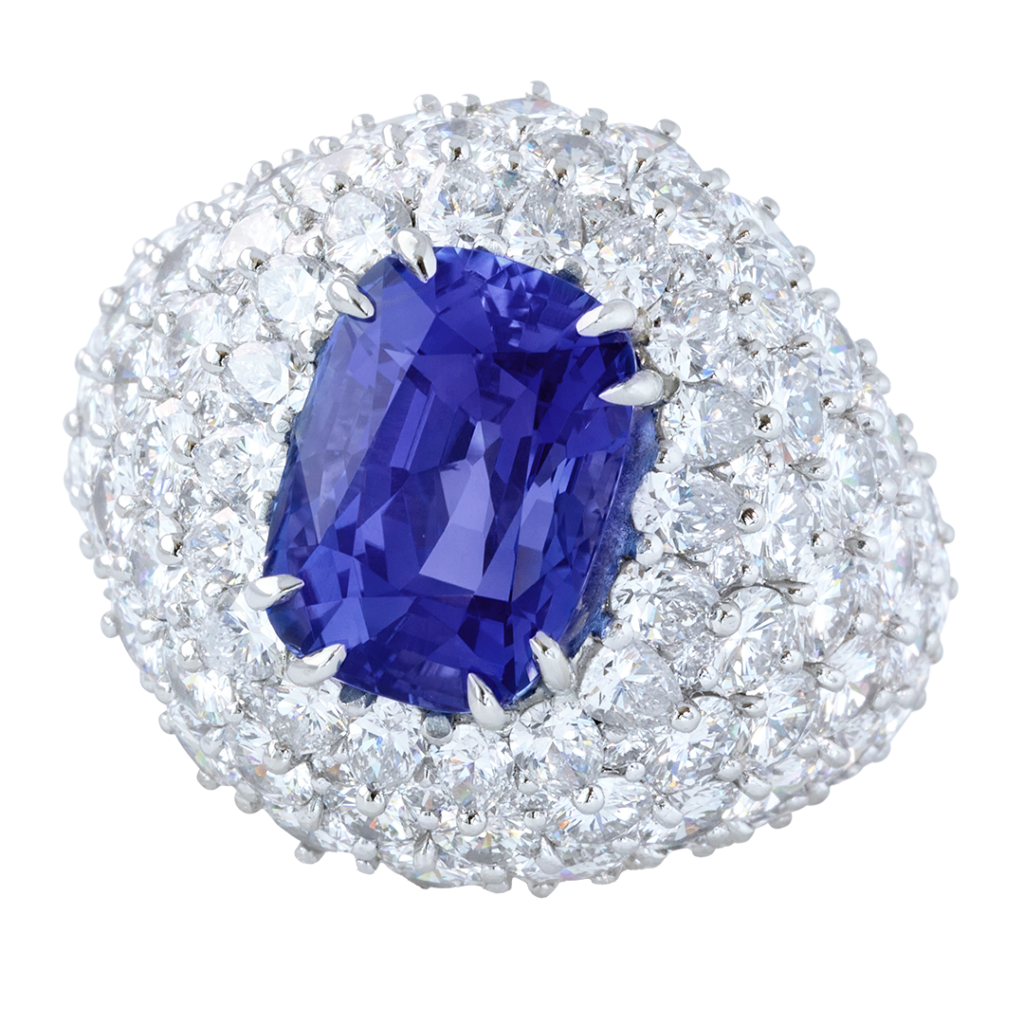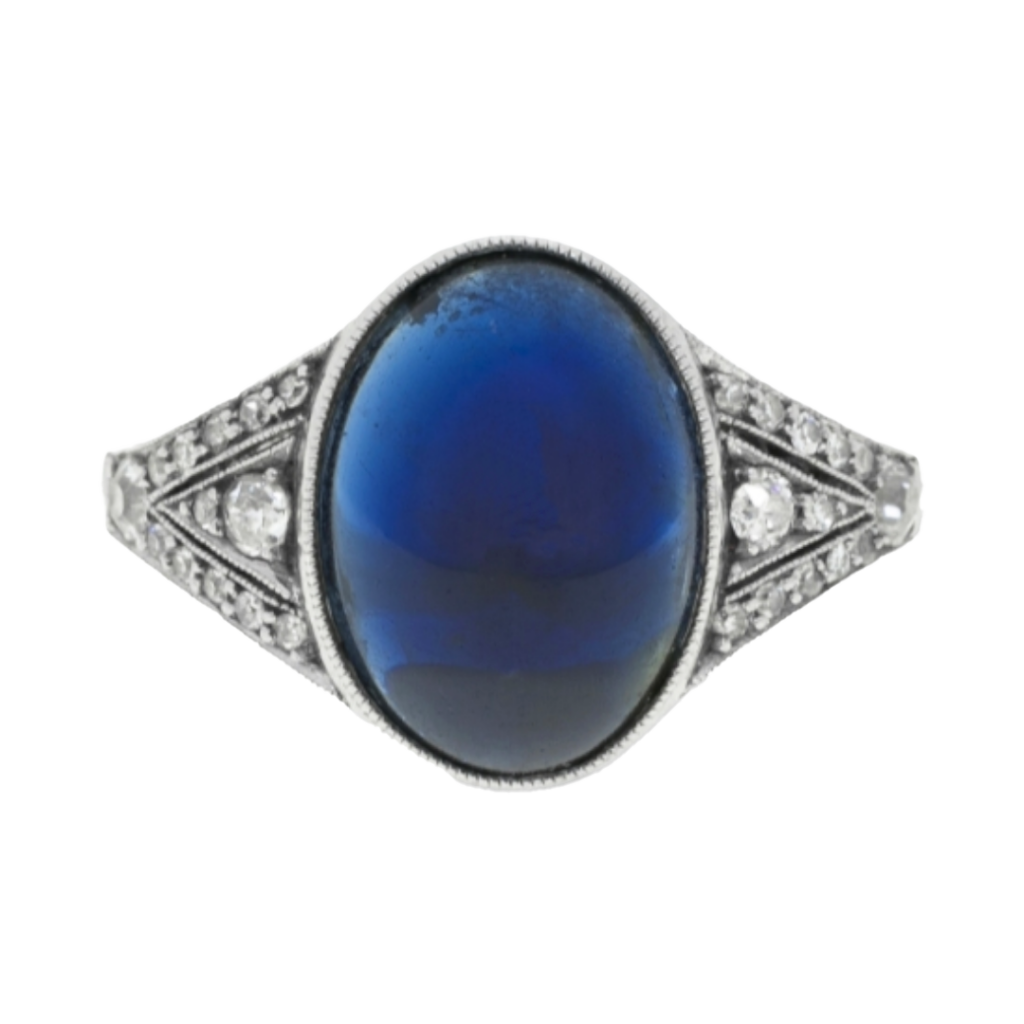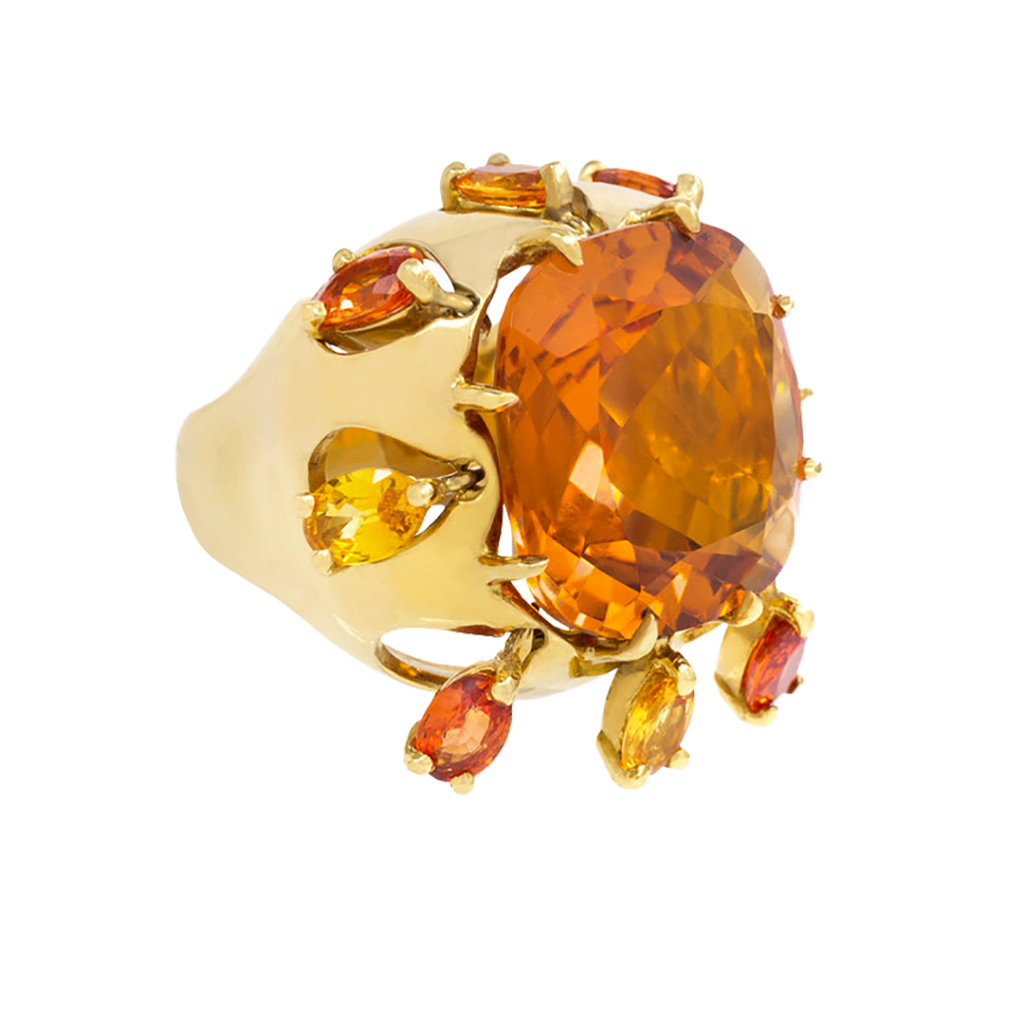Sparkling and flamboyant, cocktail rings came to prominence in the 1920s as a symbol of rebellion and independence for women. The 1920s were a decade of tremendous societal change. Movies were introduced, cars, trains, radio, jazz music and prohibition were all influencing the way people lived their lives. And this was especially true for women.
Women in urban areas were joining the workforce more often and this gave them their own source of income, leading to more independence. Many had filled jobs left vacant by men who served in World War I and they wanted to keep their jobs as well as the money and freedom that employment gave them.
This new working woman made many changes that were seen as radical at the time. Women threw out their corsets, wore dresses that revealed their legs, cut their hair into a short bob and wore make-up as well as loads of jewelry. They also smoked, drank, danced and for the first time in history women — with the exception of actresses and prostitutes — went to bars. These young women were known as flappers and are considered to be the first generation of independent American women.
Speakeasies and Cocktail Rings
Flappers loved to party, dress up and go out. But there was a catch and a rather big one. In October 1919 congress passed the Volsted Act, better known as the National Prohibition Act, banning the production, distribution, sale and consumption of alcoholic beverages. The act was repealed in 1933. Since it was illegal to drink alcohol during those years, an underground industry of bars known as “speakeasies” flourished. A personal contact or a secret password were necessary to access a speakeasy, but once inside, the party was roaring. Remember that in the early 1920s the world was recovering from World War I as well as the flu pandemic and after years of pain and grief, people were ready for some much needed fun in their lives.
Speakeasies were the breeding ground for cocktails. Illegal alcohol didn’t taste very good so other ingredients were added to make it more palatable and mixed drinks such as the Tom Collins, Sidecar and Gin Rickey became popular. The most important jewel that a woman wore to the speakeasy was her cocktail ring. A cocktail ring is defined as a ring with a very large center stone, often adorned with diamonds. The rings were flamboyant and meant to attract attention.
How to Wear A Cocktail Ring
Cocktail rings had two purposes. One was a statement against prohibition and a way to bring attention to drinking. The other was a show of female independence. Cocktail rings let it be known that a woman had self-purchased the ring with her own money. Flappers were very specific in the way they wore a cocktail ring. It was always worn on the right hand, sometimes on the index finger, so that no one could mistake it for an engagement or wedding ring.
Some women matched the color of the stone in their ring to the color of their favorite cocktail. And when ordering a fresh drink, a flapper raised her right hand flashing her ring for attention. Flappers also held cocktails with their right hand drawing more attention to the sparklers on their fingers. As the 1920s progressed, the cocktail ring was elevated to a status symbol of wealth, independence and rebellion. The opulent lifestyle of the 1920s came to a screeching halt when the stock market crashed in October 1929 and the reality of the ensuing economic hardships set in.

Cocktail Rings Are Still Stylish
The cocktail ring however, remained popular through the 1930s. And they were still going strong in the 1940s with large citrine or aquamarine center stones with little to no embellishment as materials for jewelry were hard to come by during the World War II years. During the 1950s and 1960s cocktail rings were a very popular jewel for going out, especially to cocktail or dinner parties, to the theater or other special events. The cocktail ring faded in popularity during the 1970s but came roaring back into fashion in the 1980s and they’ve been going strong ever since.
Today, you can wear your cocktail ring anytime: During the day, for a special night out, or just because you want to show your independence and maybe a touch of rebellion.
Featured image (top of page): “Where there’s smoke there’s fire” by American artist Russell Patterson (1893-1977). Full-length illustration of a fashionably dressed flapper standing with one hand on her hip and a cigarette in the other hand.
Authored by Amber Michelle



